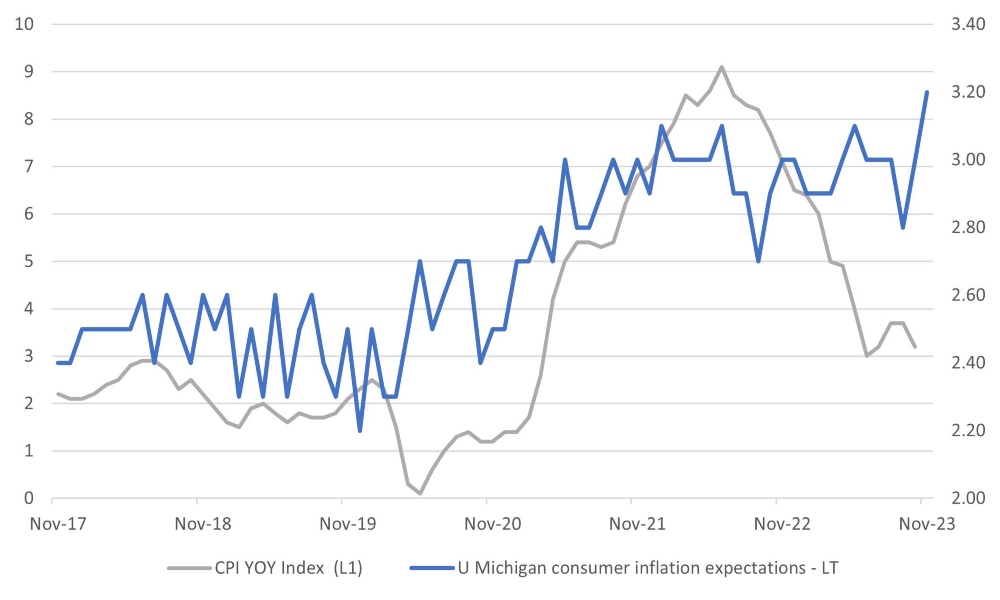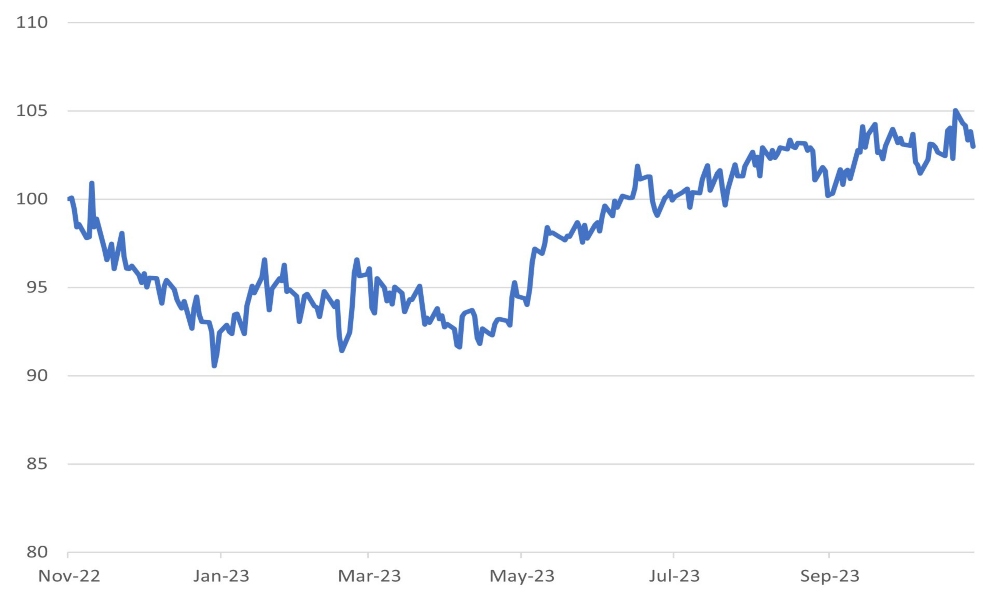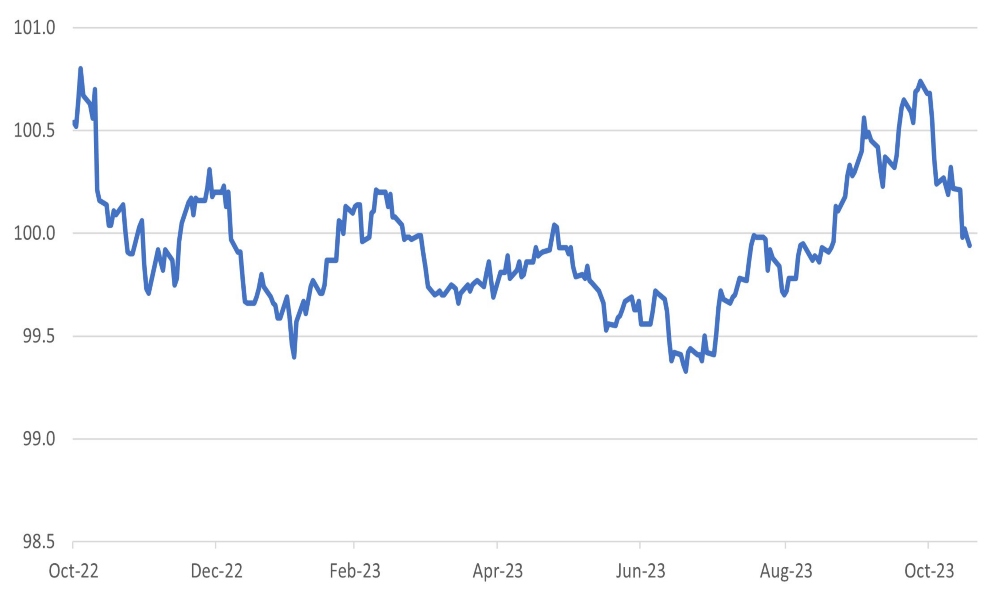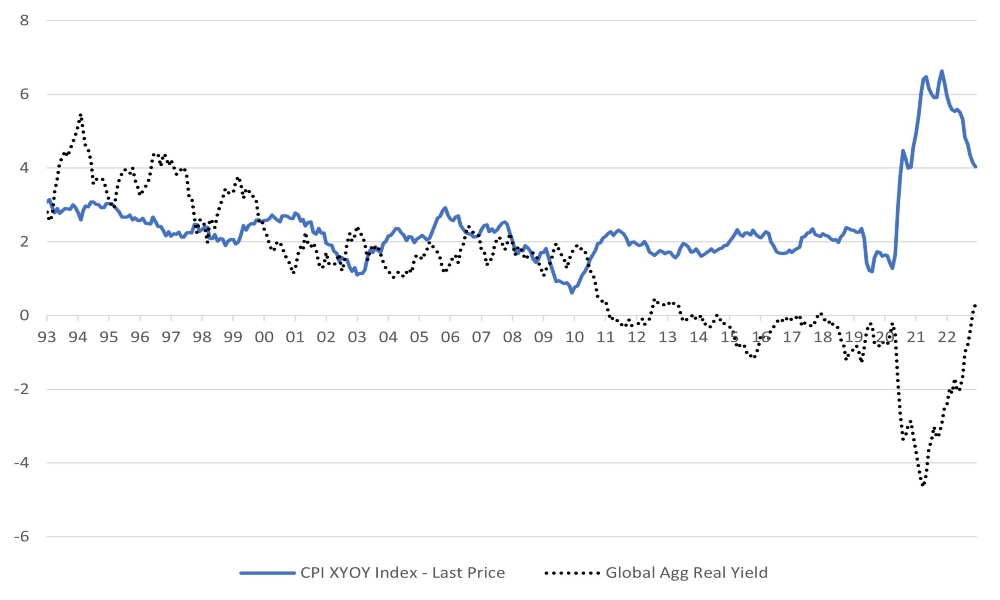How Can 0.1% Feel So Good?

- US CPI data beats expectations by 0.1% and markets rally
- The markets have almost priced a perfect outcome of a soft landing and unwinding of inflation
- It’s too early to judge how things will work out, but the loosening of monetary conditions could lead to an unwanted rebound in inflation
- The rest of the world enjoys the moderation in US monetary policy and dollar risk
Last week witnessed a notable boost to investor sentiments as the 0.1% outperformance of U.S. inflation data versus expectations prompted a discernible uptick in risk appetites. The impact resonated through the global bond markets, with a significant decline in yields—U.S. 10-year notes receded by 20 basis points (bps), paralleled by a steeper 30 bps reduction in New Zealand. Equities, too, ended the week on a high, with markets generally advancing 2-4%. European and Japanese indices, in particular, benefited, eclipsing gains in the U.S. and capitalising on a concurrently retreating U.S. dollar.
The static U.S. headline inflation figure, against the forecast of a 0.1% rise, seemed to uncork a reserve of latent optimism, despite core inflation inching up 0.2%, or an annualised 4.0% rate. Nevertheless, when weighing a solitary data point, exercising caution is of utmost importance, especially in the wake of heightened household inflation expectations—now at a decadal zenith (Chart 1).
The decline in the value of the dollar, which plunged 1.9% in the past week alone, aptly underscores the shift in investor sentiment. Equity markets beyond American shores seemingly present more compelling valuations, especially when considering the broader implications of subdued U.S. inflation on global currency and price stability.
Chart 1: Trend in five-day change in US 10-year bond yield
 Source: Bloomberg
Source: Bloomberg
If we take the current inflation data at face value or assume that it might moderate in the coming months, then, in our view, markets outside of the US offer better value rather than just tactically adding to US equities per se. A lower US inflation risk – again, a solitary number may not indeed reflect a trend – significantly diminishes the general global risk of a higher dollar and an increase in general global price levels. Dollar strength last week was in complete abeyance, and the trade-weighted dollar is now down 2.7% from its early October peak.
A broader argument has gained ground that the MSCI World ex-US equity markets could do relatively well at this juncture. The US equity market has outperformed markedly since May when the economy and inflation both were showing signs of a re-acceleration. Back then, the rest of the world, though, was fretting about how high US interest rates might go and how strong would the dollar be. With the markets now suspicious that growth is on a lower plane and inflation dipping back to what can be called a comfort zone, other parts of the world could present more attractive opportunities.
Chart 2: MSCI USA relative to the MSCI World ex USA (rebased to -1Y =100)
 Source: Bloomberg
Source: Bloomberg
In the wake of the recent market rally, an assessment of the investment-grade bond market reveals a return to pre-pandemic real yield levels—yet the spectre of a bond market correction looms should inflation revert to a normative 2%, potentially heightening real yields significantly. Presently, bondholders might anticipate returns scarcely exceeding coupon rates, a stark reminder of the ongoing correction from previous bond market exuberance.
Chart 3: Goldman Sachs US Financial conditions index
 Source: Bloomberg
Source: Bloomberg
Chart 4: Global aggregate real bond yield (adjusted for core US inflation) and core inflation
 Source: Bloomberg
Source: Bloomberg
We reiterate our preference for markets that offer value and a catalyst for better-than-average performance. Asian equities remain attractive. In bond land emerging market debt and preferred debt are our choice sub-asset classes.
Copyright © Dalma Capital, All rights reserved.
This document is being provided for information purposes only and on the basis that you make your own investment decisions; no action is being solicited by presenting the information contained herein. The information presented herein does not take account of your particular investment objectives or financial situation and does not constitute (and should not be construed as) a personal recommendation to buy, sell or otherwise participate in any particular investment or transaction. Nothing herein constitutes (or should be construed as) a solicitation of an offer to buy or offer, or recommendation, to acquire or dispose of any security, commodity, or investment or to engage in any other transaction, nor investment, legal, tax or accounting advice.
The information contained herein is not directed at (nor intended for distribution to or use by) any person in any jurisdiction where it is or would be contrary to applicable law or jurisdiction to access (or be distributed) and/or use such information, including (without limitation) Retail Clients (as defined in the rulebook issued from time to time by the Dubai Financial Services Authority). This document has not been reviewed or approved by any regulatory authority (including, without limitation, the Dubai Financial Services Authority) nor has any such authority passed upon or endorsed the accuracy or adequacy of this document or the merits of any investment described herein and accordingly takes no responsibility therefor.
No representation or warranty, express or implied, is made by Dalma Capital Management Limited (“Dalma”) or its affiliates as to the accuracy, completeness or fairness of the information and opinions contained in this document. Third party sources referenced are believed to be reliable but the accuracy or completeness of such information cannot be guaranteed. Neither Dalma nor any of its affiliates undertakes any obligation to update any statement herein, whether as a result of new information, future developments or otherwise.
This document contains forward-looking statements. Forward-looking statements are neither historical facts nor assurances of future performance. Instead, they are based only on current beliefs, expectations and assumptions regarding the future of the relevant business, future plans and strategies, projections, anticipated events and trends, the economy and other future conditions. Because forward-looking statements relate to the future, they are subject to inherent uncertainties, risks and changes in circumstances that are difficult to predict and many of which are outside of Dalma’s and/or its affiliates’ control. Actual results and financial conditions may differ materially from those indicated in the forward- looking statements. Forecasts are based on complex calculations and formulas that contain substantial subjectivity and no express or implied prediction made should be interpreted as investment advice. There can be no assurance that market conditions will perform according to any forecast or that any investment will achieve its objectives or that investors will receive a return of their capital. The projections or other forward-looking information regarding the likelihood of various investment outcomes are hypothetical in nature, do not reflect actual investment results and are not guarantees of future investment results. Past performance is not indicative of future results and nothing herein should be deemed a prediction or projection of future outcomes. Some forward looking statements and assumptions are based on analysis of data prepared by third party reports, which should be analysed on their own merits. Investments in opportunities such as those described herein entail significant risks and are suitable only to certain investors as part of an overall diversified investment strategy and only for investors who are able to withstand a total loss of investment.
